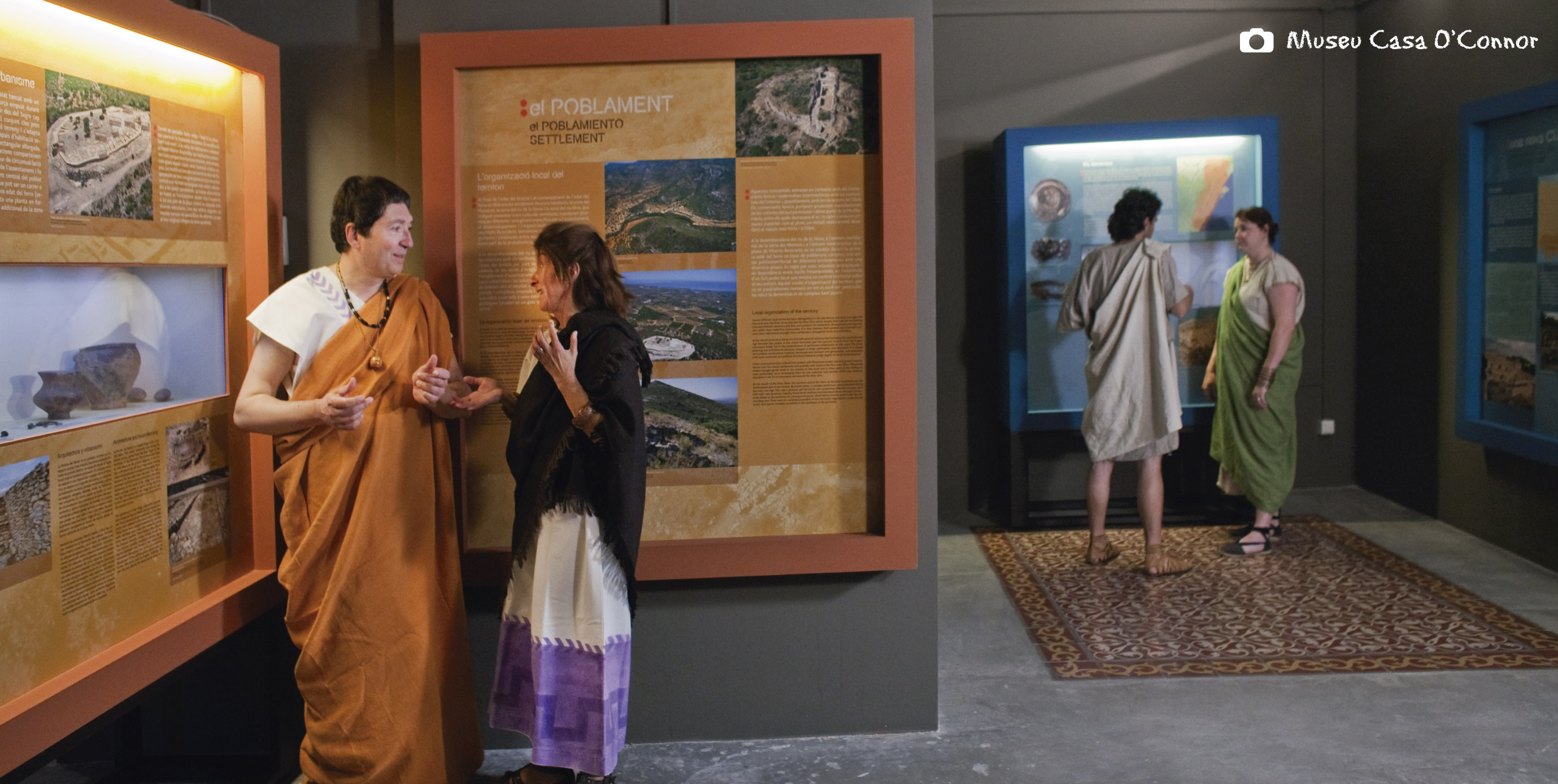
If you enter the Alcanar village, you will be amazed by the historical part. Narrow and steep streets speak of how the nucleus originated in 1239, after the Arab occupation left a strong imprint in many aspects.
In this old town, you will find vestiges of the old wall such as the Torre del Carrer Nou, located in one of the town’s highest points to have good visual control of the territory.
From there, you can imagine the wall line that would continue until the church of Sant Miquel, a temple built at the end of the 16th century, following the neoclassical style and later, in the 19th century, current cruise and presbytery. Undoubtedly, the church is the most outstanding building in the village’s heritage, and one of its most singular features is the fortress character due to the bartizan located on one side of the main façade.
Behind the church, there’s the old abbey, a nineteenth-century and historicist building.
Following the Carrer del Forn, the cradle of the town, you will arrive at the Cisterna del Vall. Built upon the former moat, before the 17th century, this construction was designed to store water for home use. Large stone ashlars make up the ground and walls of one of the largest tanks in Europe.
Next to the Cisterna, you’ll see Casa O’Connor, a modernist house that has become a local museum formed by the Interpretation Centre of the Iberian Culture, the Contemporary History Space and the Galià Space. The most important archaeological exhibits are taken from the Sant Jaume – Mas d’en Serrà and La Moleta del Remei settlements. And you can also learn about Alcanar’s most recent history, from that of the 19th and 20th centuries.

Next to the Cisterna, you’ll see Casa O’Connor, a modernist house that has become a local museum formed by the Interpretation Centre of the Iberian Culture, the Contemporary History Space and the Galià Space. The most important archaeological exhibits are taken from the Sant Jaume – Mas d’en Serrà and La Moleta del Remei settlements. And you can also learn about Alcanar’s most recent history, from that of the 19th and 20th centuries.
The Galià Space, on the other hand, shows the legacy that the renowned painter Narcís Galià gave to the town. A collection made up of drawings, sculptures and, especially, paintings, which surprise by their extraordinary colours. All this is accompanied by another artistic treasure that the Casa O’Connor hides: the modernist paintings that decorate the walls and that will explain to you how people used to live. You will find delicate representations of children playing with bubbles or staging different arts. And you will even find desserts and details of beverage brands that well-off families consumed at the beginning of the 20th century.
Casa O’Connor was the home to one of Alcanar’s great landowner families in the 19th century, together with the Sunyers and the Aiguavives. These families’ stately houses are also preserved and are located around the Plaça Major. Quite at hand, we can also find the building popularly known as the Palau (“palace”), a large mansion built in the 18th century.
Helena Fibla Reverter – Historian
Comments